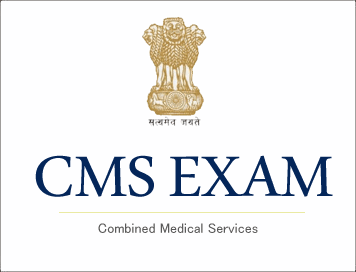(HOT) UPSC Current Affairs 2025 PDF
NEW! The Gist (NOV-2025) | E-BOOKS
(Download) UPSC Combined Medical Services Exam (Paper -1) - 2017 General Medicine and Pediatrics

(Download) UPSC Combined Medical Services Exam (Paper -1) - 2017
General Medicine and Pediatrics
1. Which of the following is NOT correct?
(a) Hepatitis A does not lead to massive hepatic necrosis
(b) Hepatitis B vaccination is part of universal childhood vaccination
(c) Hepatitis C is commonest cause of transfusion transmitted hepatitis
(d) Hepatitis E carries very high mortality in pregnant women
2. Which of the following antihypertensive drugs is contraindicated in pregnancy?
(a) Hydralazine
(b) Amlodipine
(c) Labetalol
(d) Ramipril
3. Which of the following least predisposes to infective endocarditis?
(a) Ventricular septal defect
(b) Atrial septal defect
(c) Patent ductus arteriosus
(d) Tetralogy of Fallot
4. A 60 year old male with Marfan’s syndrome comes to emergency department with severe generalised tearing pain localised to chest anteriorly and inter scapular region, sweating and weakness. On examination, his BP is 200/140 mm Hg. X ray chest shows widening of superior mediastinum. ECG shows sinus tachycardia. What is the most likely diagnosis?
(a) Acute pulmonary embolism
(b) Dissection of aorta
(c) Acute myocardial infraction
(d) Acute pericarditis
(E-Book) UPSC CMS (MEDICAL) EXAM Papers PDF Download
(Books) UPSC Combined Medical Services Examination (CMS)
5. A patient who is allergic to penicillin can be prescribed which of the following drugs for prophylaxis of acute rheumatic fever?
(a) Ciprofloxacin
(b) Erythromycin
(c) Cotrimoxazole
(d) Tetracycline
6. QT interval is prolonged in:
(a) Hypocalcaemia
(b) Hyperkalaemia
(c) Hypermagnesaemia
(d) Digoxin therapy
7. Differential cyanosis is seen in:
(a) Atrial septal defect with pulmonary arterial hypertension
(b) Ventricular septal defect with pulmonary arterial hypertension
(c) Patent ductus arteriosuswith pulmonary arterial hypertension
(d) Fallot tetralogy
8. Wilson’s disease is characterised by all EXCEPT:
(a) Increased urinary copper
(b) Increased hepatic copper
(c) Deposition of copper in Descemet’s membrane
(d) Increased serum ceruloplasmin
9. Following drugs are used for H.Pylori eradication EXCEPT:
(a) Amoxycillin
(b) Bismuth subsalicylate
(c) Tetracycline
(d) Cephalexin
10. A 45 year old female comes to you with dysphagia. She is found to have anaemia and koilonychia. Most likely diagnosis is:
(a) Plummer Vinson syndrome
(b) Boerhaave syndrome
(c) Carcinoma oesophagus
(d) Reflux oesophagitis
11. Chest tube insertion should be considered in a patient with parapneumonic effusion include the following EXCEPT:
(a) Loculated pleural effusion
(b) Positive Gram stain/culture of pleural fluid
(c) Pleural effusion is less than 10 mm thickness on decubitus
(d) Pleural fluid pH less than 7.20
12. A patient underwent hip replacement surgery. On fourth post-operative day, he had dyspnoea, pleuritic pain and haemoptysis. Most likely diagnosis is:
(a) Pulmonary embolism
(b) Pneumonia
(c) Pulmonary oedema
(d) Pericarditis
13. A 55 year old male with a history of chronic obstructive pulmonary disease was rushed to emergency department with increasing shortness of breath, fever and a productive cough with yellow green sputum. He has difficulty in communicating because of his inability to complete a sentence. Measurement of arterial blood gas shows pH 7.3, PaCO2 68 mmHg, HCO3 28 mmol/L, and PaO2 60 mmHg. How would you interpret this?
(a) Respiratory acidosis, uncompensated
(b) Respiratory alkalosis, uncompensated
(c) Respiratory acidosis, partially compensated
(d) Respiratory alkalosis, partially compensated
14. A 40 years old woman presents with hematuria, ecchymoses and menorrhagia of six months duration. What is the most likely diagnosis?
(a) Haemophilia A
(b) Haemophilia B
(c) Idiopathic thrombocytopaenic purpura
(d) Henoch Schonlein purpura
15. Which of the following heavy metal poisoning strictly affects motor nerve ?
(a) Cadmium
(b) Mercury
(c) Lead
(d) Thallium
16. A patient develops skin necrosis 3 days after being started on warfarin for deep vein thrombosis. What is the most likely cause?
(a) Antiphospholipid antibody syndrome
(b) Protein C deficiency
(c) Disseminated intravascular coagulation
(d) Thrombotic thrombocytopaenic purpura
17. A 15 year old boy is brought to emergency with two days history of headache, vomiting and altered sensorium. His BP is 70 mmHg systolic and he has ecchymoses on his skin. Most likely organism causing his condition is:
(a) Haemophilus influenzae
(b) Listeria monocytogenes
(c) Neisseria meningitidis
(d) Streptococcus pneumoniae
18. A child presents with episode of hematuria soon after respiratory tract infection. What is the most likely diagnosis?
(a) IgA nephropathy
(b) Wegener granulomatosis
(c) Post streptococcal glomerulonephritis
(d) Churg Strauss syndrome
(E-Book) UPSC CMS (MEDICAL) EXAM Papers PDF Download
Click Here to Download Full Paper
(Books) UPSC Combined Medical Services Examination (CMS)
<< Go Back to Main Page
Courtesy: UPSC


